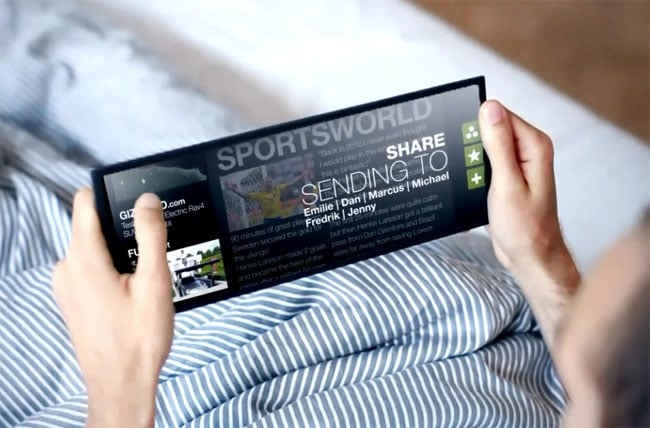In the last couple of years, touchscreen devices have become standard, and touchscreens are now featured in many of the new gadgets released on a daily basis. From smartphones and tablets to smartwatches and even household appliances, touchscreens have revolutionized the way we interact with technology. Their intuitive nature and ease of use have made them a preferred choice for both consumers and manufacturers.

The Evolution of Touchscreen Technology
But what about the future? How will touchscreen devices develop over the next five to ten years? A Swedish design firm, The Astonishing Tribe, has produced a cool video on what they think the future of touchscreen technology will be.
The video was produced as an Open Innovation experiment, and as you can see, the touchscreen devices feature stretchable displays, transparent screens, and e-ink displays. These innovations promise to take user interaction to a whole new level. Imagine a smartphone that can be stretched to the size of a tablet or a transparent display that can be integrated into your car’s windshield, providing navigation and other information without obstructing your view.
Emerging Technologies and Their Potential Impact
Some of this technology is already being developed, like the transparent displays. Companies like Samsung and LG have showcased prototypes of transparent OLED screens that could soon become mainstream. These displays could be used in a variety of applications, from augmented reality glasses to advanced retail displays.
Stretchable displays are another exciting development. Researchers are working on materials that can be bent, folded, and stretched without losing functionality. This could lead to devices that are more durable and versatile. For example, a stretchable smartwatch could fit any wrist size comfortably, or a foldable tablet could be easily carried in a pocket.
E-ink displays, known for their low power consumption and readability in direct sunlight, are also evolving. Future e-ink screens could offer color displays and faster refresh rates, making them suitable for a wider range of applications, including digital signage and educational tools.
Moreover, advancements in haptic feedback technology could make touchscreen interactions more tactile and immersive. Imagine feeling the texture of a fabric while shopping online or the sensation of pressing a physical button on a flat screen. These enhancements could significantly improve user experience and accessibility.
The integration of artificial intelligence (AI) and machine learning (ML) with touchscreen technology is another area to watch. AI could enable touchscreens to adapt to user behavior, offering personalized interfaces and predictive text input. ML algorithms could improve touch accuracy and responsiveness, making interactions smoother and more intuitive.
Who knows, in five or ten years, touchscreen gadgets may perform just like the ones in the video. The possibilities are endless, and the rapid pace of technological advancement suggests that the future of touchscreen devices will be both exciting and transformative.
via Dvice
Latest Geeky Gadgets Deals
Disclosure: Some of our articles include affiliate links. If you buy something through one of these links, Geeky Gadgets may earn an affiliate commission. Learn about our Disclosure Policy.